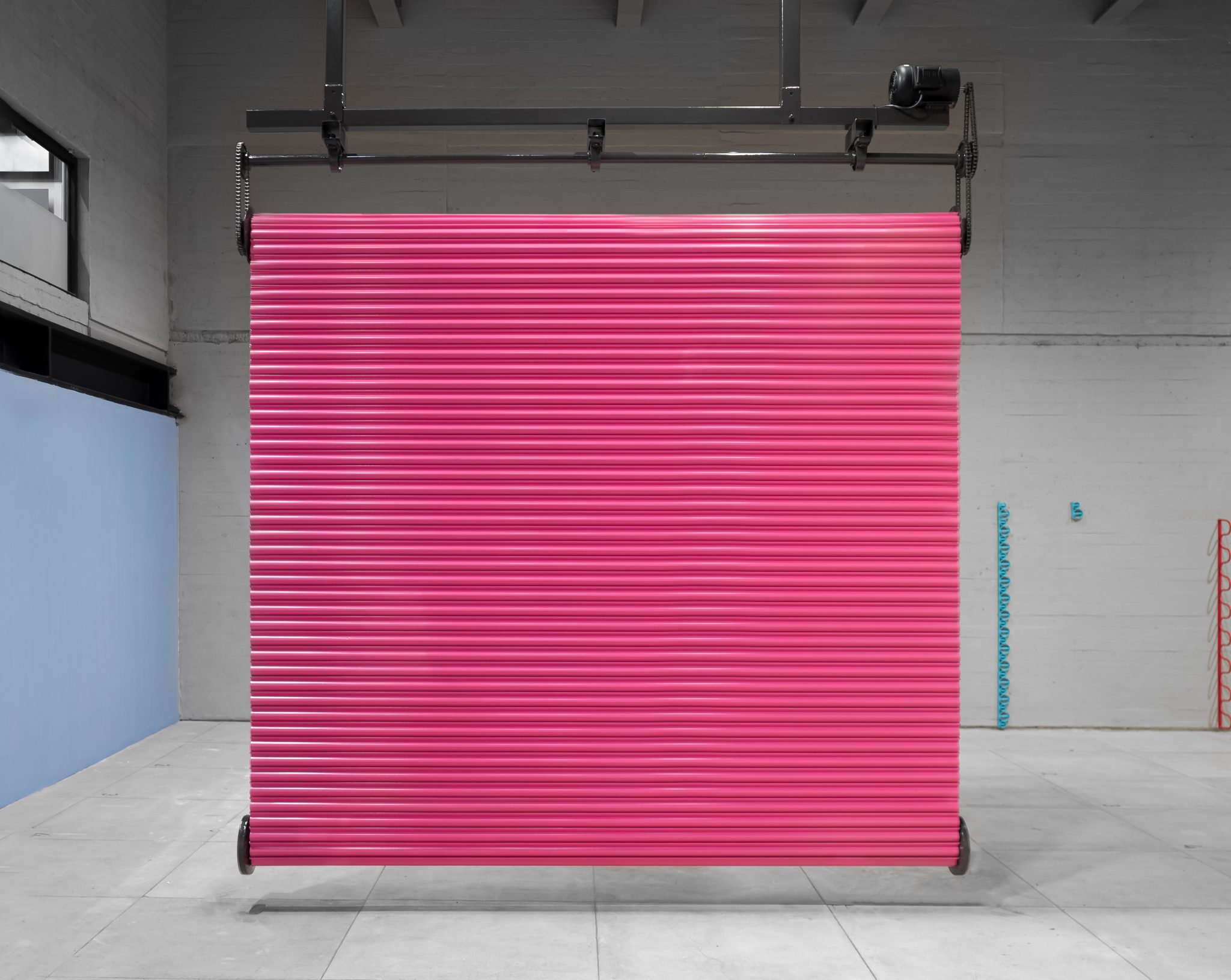What happens when an art critic reviews every single exhibition within a one-kilometre radius?
I usually avoid the San Miguel Chapultepec neighbourhood of Mexico City. Not for any particular reason; but because it’s not so easily accessible via my preferred form of public transport. One recent morning, however, I was at Mari Gold, an over-hyped ‘Indo-Mexa’ breakfast-lunch spot right in the middle of an area crawling with contemporary art galleries. The food was fine, I guess – papaya with pistachios is always a good choice, but the sopes with minilla were more like Tostito-sized snacks for the price of what a whole meal would have been in a humbler spot a few blocks over. It’s my fault for straying from my usual stomping grounds and into an area ruled by two types of establishment: Frida-Coyoacán-kitsch or greige-minimalist-overpriced. For that, there was no one else to blame but myself. Afterwards, I got on with my assignment for the day: to look at every single art gallery, good or bad, within a half-kilometre radius of kurimanzutto, the apparent centre of the CDMX art universe. I had picked the area precisely because I don’t frequent it, only work can drag me here, and I was anxious about what I would find: if some of the best-known galleries are here; so are some of those you might politely describe as ‘fillers’.
My first stop was RGR, a very serious looking gallery in a corner building that it seemed to occupy in its entirety. I had been here before, I think I saw some Carlos Cruz-Diez ‘chromointerferent’ Op-art pieces recently? This time, the gallery was showing O Vento Experimenta o que irá fazer com sua liberdade (The Wind Experiments With What It Will Do With Its Freedom) by Brazilian Marcelo Cidade, which was a nice surprise. Ansiosa ansiedade (Anxious Anxiety, 2024), the central work, was his take on a kinetic sculpture, a Barbie-pink garage bay-door cyclically rolling down and then back up with characteristic noisiness. Sitting in a corner was Resíduo privado de um corpo laboral explotado (Private Residue from an Exploited Labor Force, 2024), an object that is omnipresent in the crevices of my beautiful city: a plastic Coca-Cola bottle filled with a suspicious yellow liquid, a pithy gesture that cleverly encapsulated Cidade’s gift for the aesthetic observation of the urban environment.
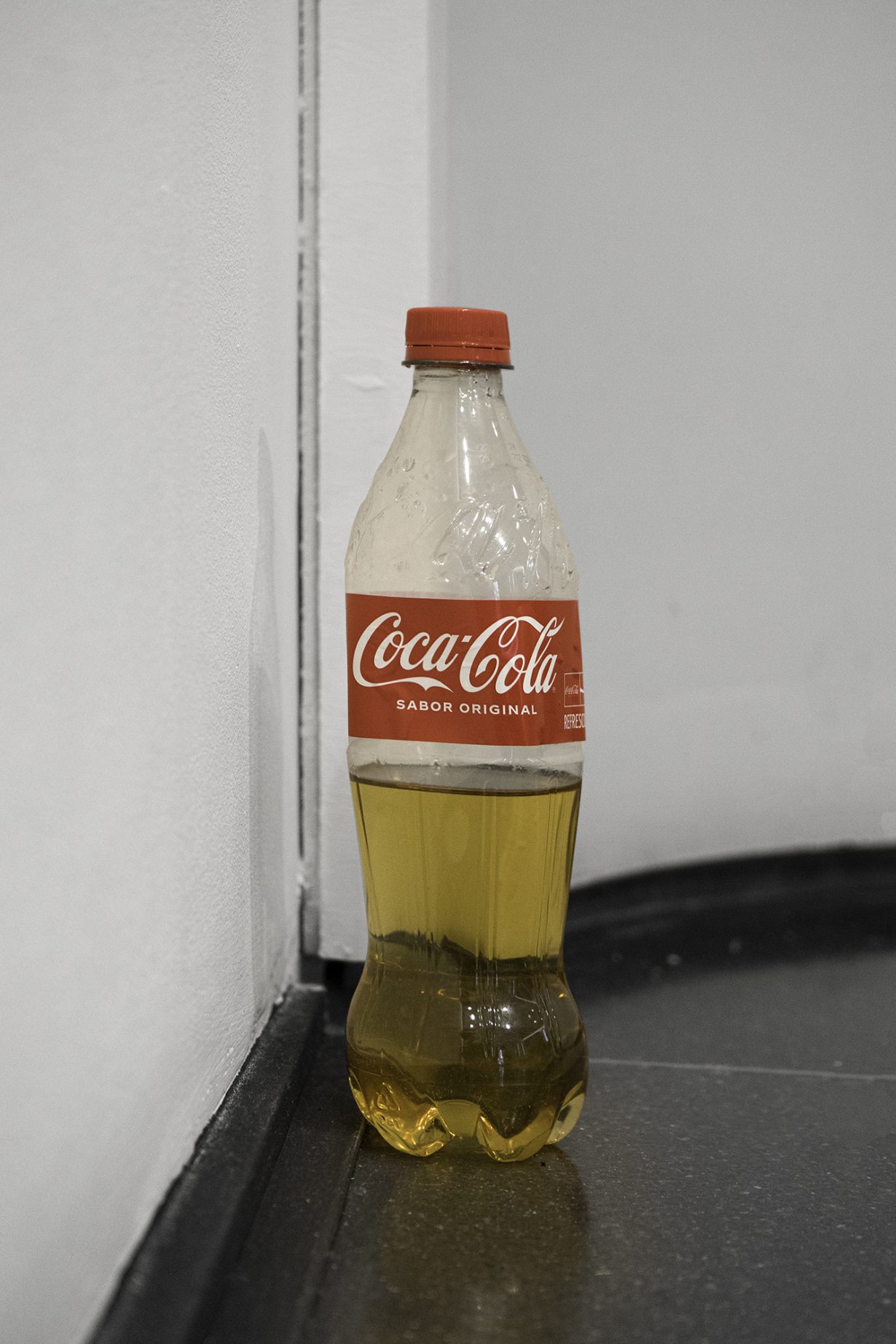
My second stop, at Le Laboratoire, materialised every fear and prejudice I have about San Miguel galleries and the real reason I evade them: extraneous formal experiments, mostly by men of a certain age. It was an indecipherable four-person group show; a veritable snoozefest. ‘Stuff’ was everywhere: the best looking was 7 Islas (7 Islands, 2007), geography-inspired cowhide floor-sculptures by Gabriela Gutiérrez Ovalle; then there was Árbol y Escorpión (Tree and Scorpion, 2024), six ugly chunks of wood encrusted with vinyl-record chips by Guillermo Santamarina; and also a lot of Carlos Aguirre’s minimalist, black canvases completed by metal rods coming off the wall, from the series Extensiones y tensiones espaciales desde el plano pictórico (Spatial Extensions and Tensions from the Pictorial Plane, 2024). There were so many more works, I simply do not have the stamina to keep on describing. Naturally, this mish-mash of art objects was crowded under the title Archipiélagos (Archipelagoes), force-fitting a Glissant quote under pretexts so vague, so slippery, that I really thought: ‘What did he ever do to you?’
Also a little cramped was Galería de Arte Mexicano (GAM), a historical locale once run by legendary gallerist Inés Amor: Rivera, Toledo, Siqueiros, Tamayo and Carrington are still on its roster. They were showing Structure? by British sculptor Luke Hart. Chain-Link Twist III: Half Ellipse (2024) consisted of 21 sizable carbon-steel beams held together by interconnected orange clamps. The sequence was arranged dynamically, the two ends lying on the floor so that the middle section fanned haphazardly, in precarious equilibrium. Bar Arrangement I (2024) performed a similar trick but with less beams and in more chaotic angles. It felt slightly redundant, especially since the pieces were far too big for the space and one could never get a wide, unobstructed view of them to admire their industrially produced simplicity. An excessive amount of text on the poster-sized handout also drowned the otherwise straightforward work.
Nevertheless, undaunted, I kept going and dropped by Patricia Conde Galería, dedicated to contemporary Mexican photography. It was showing Crecí a la sombra de los árboles (I Grew Up in the Trees’ Shadow), dozens of small-format prints by Cristina Kahlo (yes, great-niece of). I will only say that most of them looked like what the bigwig at a publisher who underestimates women readers would pick as the cover of the new Elena Ferrante novel. A couple blocks down, I tried to visit Lizbeth Mitty’s painting show at Adhesivo Contemporary but the door was locked and no one was there to open it. There was a dark hued triptych that looked intriguing from the other side of their glass doors.
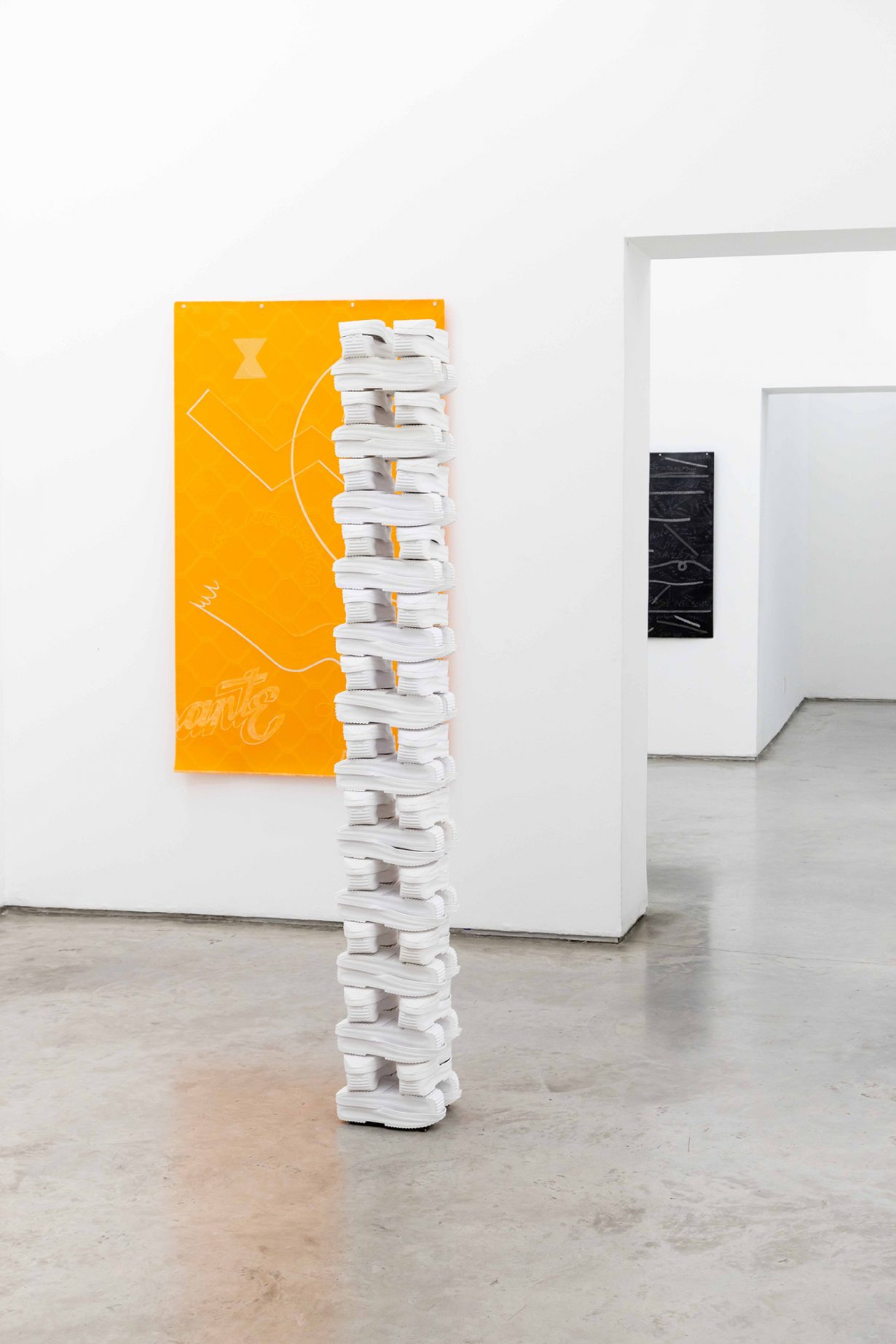
After that I strolled to Galería Enrique Guerrero, a spot that also enjoyed a sparkly moment in the early 2000s, back when they showed Teresa Margolles, Guillermo Kuitca and Julian Schnabel. Nowadays… well, I haven’t really visited in a while, but I was pleasantly surprised by Peruvian Jimena Chávez Delion’s show Aferrarse a los márgenes (Hanging on to the Margins). Hers is kind of a post-Post-Internet, readymade-ish sculptural exercise that leaves behind that movement’s cynicism to opt for a more regionally empathetic critique. A highlight was Montaña (2024), a Jenga-like tower of white sneaker-soles rising to a few meters in height. It imitated the way migrant workers pile the many bootleg sneaker soles they hand-paint daily in Lima, the artist’s home city, for sale in its many markets dedicated to ‘piratería’. As documented in Chávez Delion’s charming video Despertar el pulso (Awakening the Pulse, 2023), many of those workers arrive from nearby provinces and neighbouring countries. The artist’s eye and tact when recording the women workers felt very refreshing, unlike so much of the current victimisation and dehumanisation of such people, which is, unfortunately, the prevailing image perpetuated by mass media.
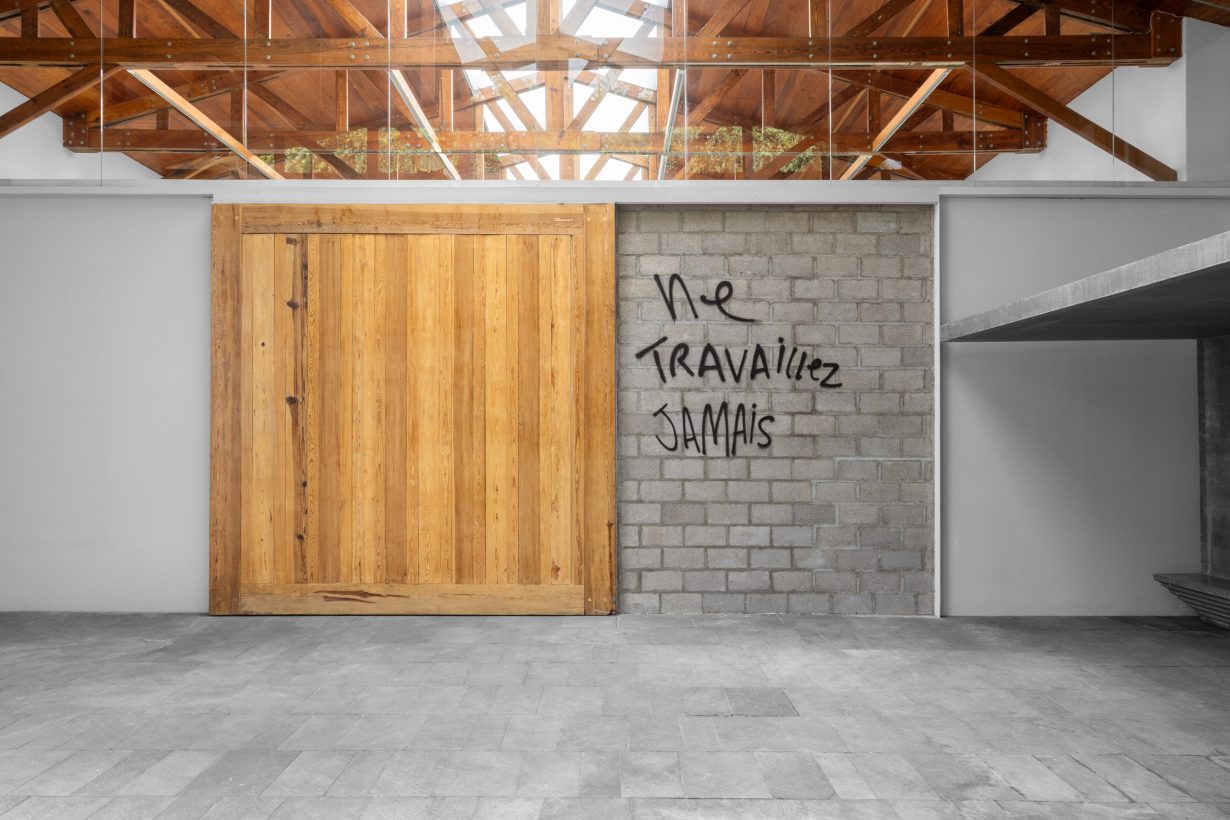
I was particularly taken by the part when a young girl, while painting a sneaker sole, talks about her dream: to make enough money to go back to Venezuela and study fine art. Soon enough, I got to the crown jewels of San Miguel Chapultepec: Kurimanzutto and Labor. At Kuri there was an eponymous show by Danh Vo, his second in five years, which is quick return for a gallery representing the number of artists it does. It wasn’t as perfect as the 2019 Danh Vo, but it was pretty good. There was a wooden space-within-a-space holding up 47 framed lithographs of different closeups of Renaissance paintings, lightly overlaid with Fraktur type that read ‘lick me lick me’, which was also the title of the entire piece. The best was at the very end: Untitled (2024) was a graceful little setup that included a sleek Angelo Mangiarotti grey-stone console with some plants, flowers and animal bones. Hanging above it, a crumpled replica of an early 13 Colonies American flag veiling a tiny, almost completely invisible, sixteenth-century Flemish painting of a Madonna Lactans. Vo’s historical-conceptual games of hide-and-seek continue to be amusing, and I imagine the 47 small prints flew off the shelves.
In a nice full-circle moment for my tour, another Brazilian artist was showing at Labor: Raphaela Melsohn’s Cortando linha se faz espaço (Cutting Lines Makes Space). She too showed at RGR earlier this year, in their Después del edén (After Eden) group show, but this was her first solo show in the city. There were a lot of big ceramic pieces, quite beautiful, though maybe a little cramped – an ongoing trend, apparently. They were white and voluptuous, their curves had curves: textured, bearing the marking and smoothing patterns of the artist’s fingers, they huddled in a huglike formation (DE NOVO E DE NOVO PASSO MEUS DEDOS PARA CONSTRUIR LUGAR, Again and Again, I Trace with My Fingers to Create Space, 2024), laid about like intestines in a butcher shop (Nó, 2024), or stood up, alert, like organic periscopes (Tipping Point, 2024). The best part was the ‘cutters’: Cut #1 and #2 (2024), large, heavy steel walls, bisected in the middle and standing near the entrance and in the back like exaggerated space dividers. Delightfully, the walls gave in to one’s touch, they were meant to be swung on their axis, cutting into the space in different ways. They reminded me of Hart’s steel works at GAM, which simulated flexibility and possibility; Melsohn’s enacted this.
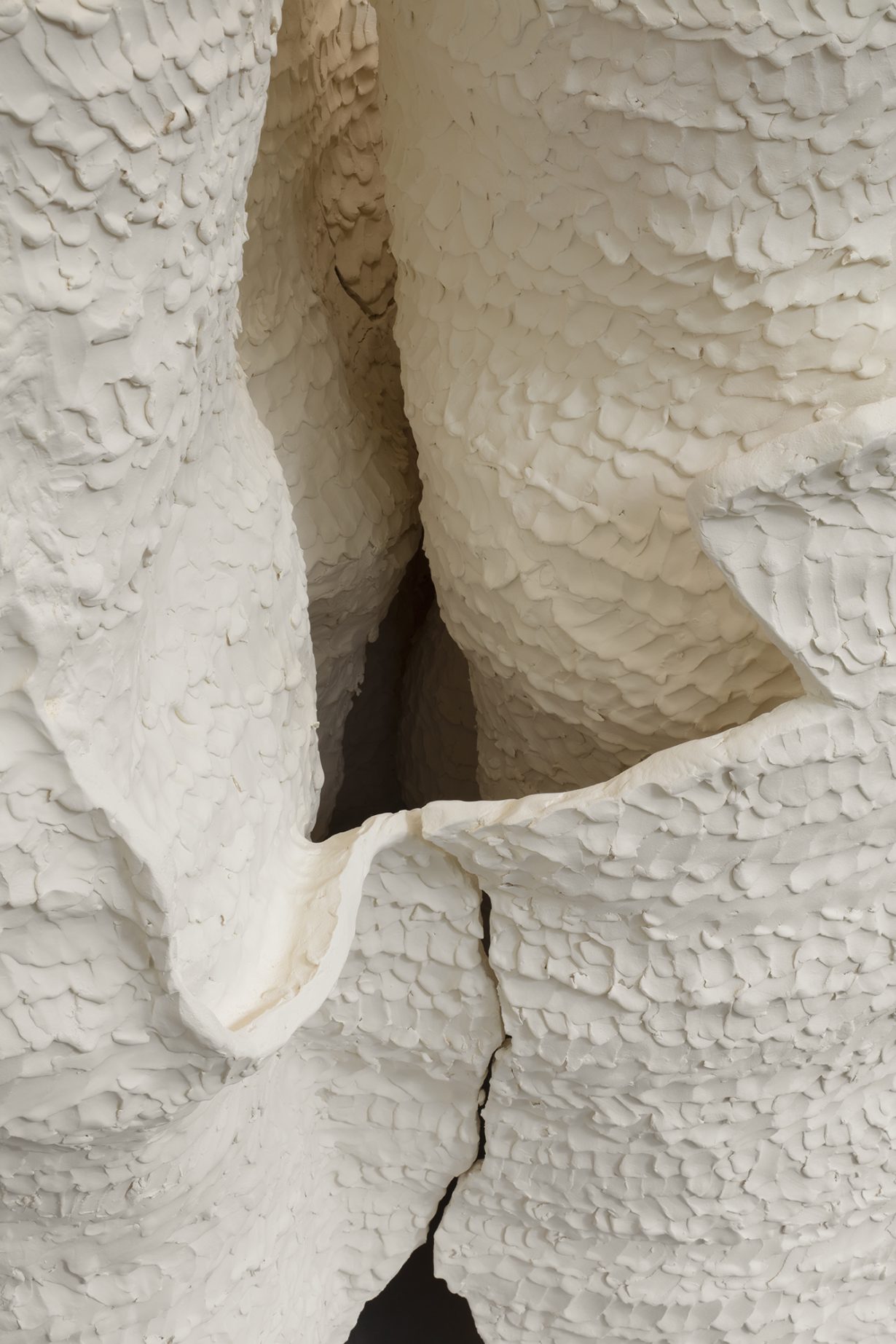
Anonymous Gallery gets an honorary mention. Circulación Espectral (Spectral Circulation) was a group show about money with works by well-known locals Paloma Contreras Lomas and Daniel Aguilar Ruvalcaba, along with a couple of foreigners, Ignacio Gatica from Chile and Adriana Martínez Barón from Colombia. Gatica had Preface for an Automated Stratosphere UMSCA (2024), one of his now recognisable LED-tickers processing financial information live; and Peregrinación Bursátil (México) (Stock Market Pilgrimage [Mexico], 2024), a lovely silver chain with a pendant in the style of the souvenirs from la Basilica de Guadalupe, but with the Mexican Stock Market Exchange building instead, exhibited inside a delicate vitrine. Martínez Barón had quite a few pieces, a favourite was her money-loving vitrine, Arco Iris (2015), an orderly rainbow of colours created by a thick roll of bills wrapped in an elastic band. She also had Prophecy (2024), a small and intricate origamilike sculpture of three birds standing atop of each other, made out of very pretty but worthless – because of dramatic devaluation – Venezuelan bills.
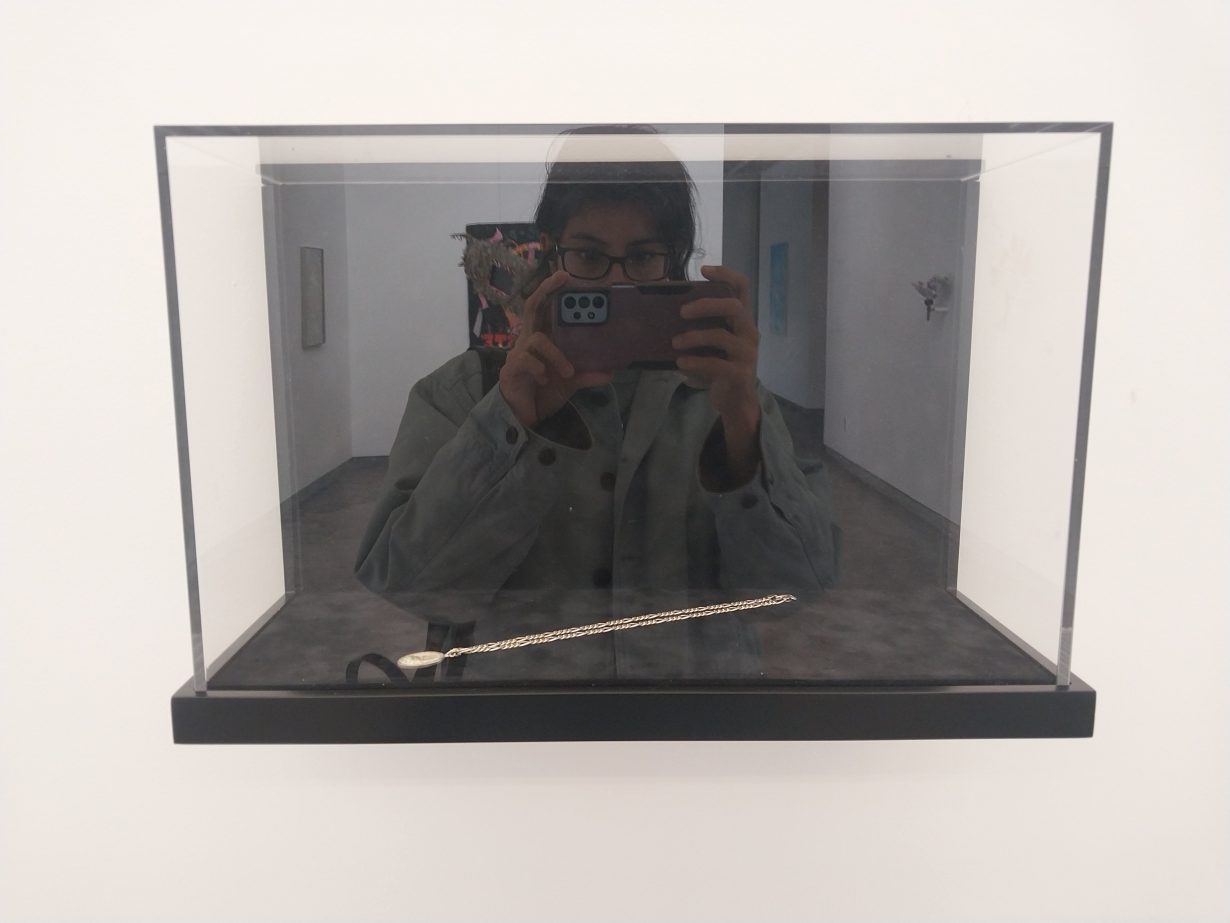
I believe this exhaustive art tour of the San Miguel Chapultepec area taught me two things: one, is that young South American artists are producing excellent work, and the local scene is finally catching up to them – surprising in a city that doesn’t show enough of our regional brethren, unless they’re living here and we personally like them. And two, is that aside from the last three galleries, which are on my usual rotation, maybe I should drop by some of the other ones sporadically as well. Maybe I should not judge the book by its cover (Instagram-posted documentation) every single time; perhaps I’ll turn the critique inwards and admit that I can afford to reexamine the preconceptions and habits I’ve fallen into after years on the local criticism beat. I will be brunching elsewhere though.
Gaby Cepeda is a writer, critic and researcher living in Mexico City
From the November 2024 issue of ArtReview – get your copy.
